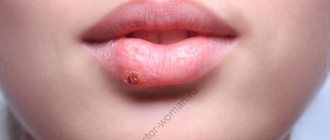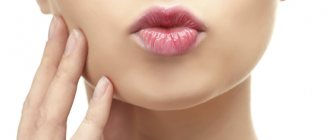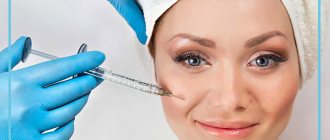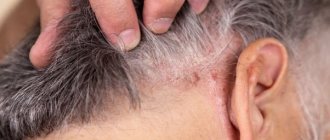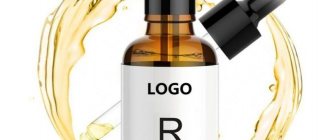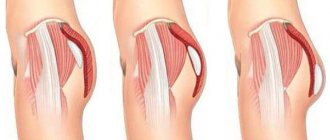Table of contents
- Etiology and pathogenesis
- Clinical manifestations
- Principles of treatment, methods of hardware treatment
Uneven skin color (dyschromia, uneven skin tone) is manifested by uneven skin color in a certain area or throughout the body.
In our company you can purchase the following equipment for the treatment of uneven skin color:
- M22 (Lumenis)
- Fraxel (Solta Medical)
- AcuPulse (Lumenis)
- UltraPulse (Lumenis)
- Clear+Brilliant (Solta Medical)
- Geneo+ (Pollogen by Lumenis)
In most cases, this condition does not pose a health risk. But sometimes uneven skin color can indicate the presence of certain diseases, side effects of taking medications, etc.
Etiology and pathogenesis
There are many etiological factors for uneven skin color, and below we will give only a few of them.
One of the most common causes is ultraviolet radiation - prolonged exposure to the sun or regular visits to solariums. Under the influence of UVB, melanocytes begin to intensively produce pigment, which can be deposited in different amounts in different parts of the body (for example, due to greater insolation of some areas and less of others) - as a result, this forms an uneven skin color.
Recent research suggests that HEV rays of 400–500 nm (High-energy visible light, blue light) emitted by modern gadgets contribute to the appearance of uneven skin color. An important feature of HEV radiation is its deeper penetration into the skin compared to UVB and UVA ( Fig. 1 ).
Rice. 1. Comparison of penetration depth of UVB, UVA and HEV radiation
Please note: ultraviolet B ( UVB ) reaches a maximum of the papillary layer of the dermis, ultraviolet A ( UVA ) reaches the reticular layer, while blue light ( HEV ) from electronic gadgets penetrates even the upper layers of subcutaneous fat.
Uneven skin color can occur as a result of environmental pollution ( pollution ). This problem is extremely relevant today for Asian countries with high urbanization and a significant density of inhabitants per square kilometer. However, the pollution factor should be taken into account by all people living in large cities. Studies have shown that under the influence of particulate matter with a diameter of 2.5–10 microns (PM2.5–10), a receptor protein (Aryl hydrocarbon receptor, AhR) is activated in human epidermal keratinocytes, which triggers genes responsible for the formation of age spots and premature skin aging . Thus, protection against pollution using cosmetics with Pollution Protection Factor (PPF) becomes very important.
Uneven color may be caused by hormonal changes (aging, menopause) or taking certain medications ( contraceptives, doxycycline).
Any inflammation acne sufferers .
Vitiligo contributes to the formation of depigmented areas of varying sizes on the skin, which overall creates a picture of uneven tone.
Vitamin B3 (niacin) deficiency causes pellagra, which causes uneven skin color, dryness, and increased sensitivity to the sun. More serious symptoms include diarrhea and dementia.
Uneven tone can also occur due to diseases of internal organs, vascular pathologies, disturbances in the microbial composition of the skin, etc.
What is hyperkeratosis
Hyperkeratosis is a pronounced thickening of the stratum corneum of the epidermis, which can reach from several millimeters to several centimeters. Depending on the changes occurring in the skin, thickening of the granular and spinous layers of the epidermis, which is called proliferative hyperkeratosis, or a slowdown in the rate of exfoliation of horn cells may be observed. In the latter case, the thickness of the granular and spinous layers, on the contrary, decreases. This is called retention hyperkeratosis.
Hyperkeratosis is not an independent disorder, but is a symptom of a whole group of skin diseases. It is characterized by excessive keratinization of individual areas or the entire skin. This can be due to a number of reasons, and only sometimes hyperkeratosis can be congenital or hereditary and act as a manifestation of ichthyosis, Mibelli porokeratosis and some other diseases. But if in this case the child has signs of skin disorders practically from birth, then with acquired hyperkeratosis they arise throughout life. They cause not only serious physical discomfort, but also psychological discomfort due to changes in appearance, especially if signs of the disease appear on the skin of visible areas of the body and especially the face.
Hyperkeratosis is also present in healthy people on the elbows, feet, and in rare cases on the knees, i.e., in places of greatest skin friction.
The reasons for the development of acquired hyperkeratosis can be external influences and disturbances in the functioning of the body, and their combinations are often observed. This:
- prolonged pressure on the skin of clothing or shoes;
- prolonged friction with items of clothing, accessories;
- constant contact with lubricating oils, petroleum products, coal and other similar substances;
- disruption of the endocrine system;
- deficiency of vitamins A and C or only one of them due to gastrointestinal pathologies or poor diet.
Hyperkeratosis can also be a manifestation of diseases such as:
- mycosis, i.e. fungal infection of the skin;
- atopic dermatitis;
- psoriasis;
- disseminated and discoid lupus erythematosus;
- seborrheic dermatitis;
- leprosy;
- lichen planus;
- neurodermatitis;
- erythroderma;
- celiac disease (celiac disease);
- eczema;
- xeroderma pigmentosum;
- diabetes mellitus, etc.
With facial hyperkeratosis, the presence of seborrheic dermatitis or discoid lupus erythematosus is often suspected. With the latter, round or oval pink spots with a bluish tint and sharp boundaries appear on the cheekbones, nose, cheeks, sometimes ears, neck and lips, which tend to increase to 5 cm and merge, and then become covered with dry dense scales.
Hyperkeratosis often occurs in older people. In such situations, it is usually caused by age-related changes in the skin and affects the back and extensor surfaces of the limbs, although it is possible that the face can also be affected.
Clinical manifestations
The clinical manifestations of uneven skin color largely depend on the cause of the condition. These may be areas of hyper-, hypo- or depigmentation, focal or widespread discoloration.
For example, melasma appears as brown spots of varying shades on the bridge of the nose, cheeks, forehead and upper lip.
PM2.5-10 particles from the ambient air make the skin dull and dry, and due to uneven deposition, give it an uneven tone.
With vitiligo, areas of complete absence of pigment of varying sizes form on the skin, without pain or itching.
Bilirubin hyperchromia (jaundice) is caused by the deposition of the bile pigment bilirubin in the skin and is characterized by a yellow coloration of the skin and mucous membranes.
Principles of treatment, methods of hardware treatment
Treatment of uneven skin color should begin with identifying the cause of this condition - otherwise, even after solving the problem, you risk relapse and/or worsening of the condition after some time. If a change in tone is caused, for example, by a disease or taking medications, it is necessary to treat the patient and/or discontinue/adjust the prescribed drug. Most likely, this will require interaction between a cosmetologist and dermatologist with doctors of other specialties.
UV filters to exposed areas of your body daily and stop visiting the solarium. To protect against blue light (HEV rays), you should limit the time you use gadgets (monitors, laptops, tablets, smartphones), working with them only when necessary. It is also not recommended to use them several hours before bedtime, and especially not in bed.
Residents of large cities are recommended to use cosmetics with the so-called “pollution protection factor” (PPF). Such cosmetics may contain the following protective complexes: Pollushield, IBR-Pristinizer, 28Extremoin, EXO-P, SymUrban, etc. For example, one of the recent developments includes acids obtained from hibiscus (Hibiscus acids), which due to chelating ( metal-binding) action prevents the appearance of age spots on the skin.
Epidermal Growth Factor (EGF) helps even out complexion - it stimulates cell growth and division, renewing the epidermis. When using products with EGF, there is a gradual increase in the synthesis of DNA, RNA, hyaluronic acid, collagen and elastin - as a result, the appearance of the skin quickly improves. Epidermal growth factor is also called Beauty Factor.
Arbutin evens out the tone well and brightens the skin. In addition, it has an antioxidant effect, improves the protective properties of the skin and promotes its recovery after sunburn. However, the concentration required to achieve a lightening effect and the duration of use of arbutin have not yet been identified. Apparently, the individual sensitivity of the skin, the depth of the pigment and other factors are of great importance.
To correct uneven tone, you can use peeling agents with acids . They reduce the pH in the stratum corneum of the epidermis and at the same time bind calcium ions. Calcium ensures the “gluing” of epidermal proteins, and when it is removed, intercellular connections weaken - keratinocytes begin to peel off, which serves as a signal to activate the division of young cells. As a result, the skin brightens and its tone evens out.
If uneven skin color is associated with uneven distribution of melanin in the epidermis, this problem can be effectively solved using hardware cosmetology methods . There are two approaches used here:
- The first approach is the selective destruction of melanin using heating with visible and near-infrared light, for example, IPL therapy, implemented in the M22-IPL device.
- The second approach is the destruction of the epidermis in order to trigger its renewal. This approach was previously often implemented using laser resurfacing, a method that involves complete vaporization of the epidermis in the treated area. Today, fractional lasers are used to “replace” the epidermis: non-ablative, such as Fraxel, Clear+Brilliant M22-ResurFX, and ablative, such as Acupulse and Ultrapulse.
The effectiveness of fractional lasers in evening out skin color depends on the percentage of the epidermis destroyed, however, these lasers, if used incorrectly, can cause complications in the form of hyperpigmentation. Therefore, when using them, you need to be careful in choosing the impact parameters and procedure techniques.
Questions from our users:
- uneven complexion
- uneven complexion how to deal with it
- uneven skin color in the bikini area
- uneven skin color causes
Cosmetics
One of the most important methods for preventing and correcting skin imperfections is properly selected skin care. Calm active melanocytes, strengthen the vascular wall, accelerate the exfoliation of altered cells - this is the task of modern cosmetics.
Unfortunately, not every product can deliver active ingredients into the deep layers of the skin - it is important to choose products from the cosmeceutical group that actually work. The ideal solution could be the Australian cosmeceutical brand Ultraceuticals, recognized by cosmetologists around the world. In addition to skin care and treatment products, the line includes the world's best photoprotection products, without which it is impossible to imagine an even complexion and youthful skin.
